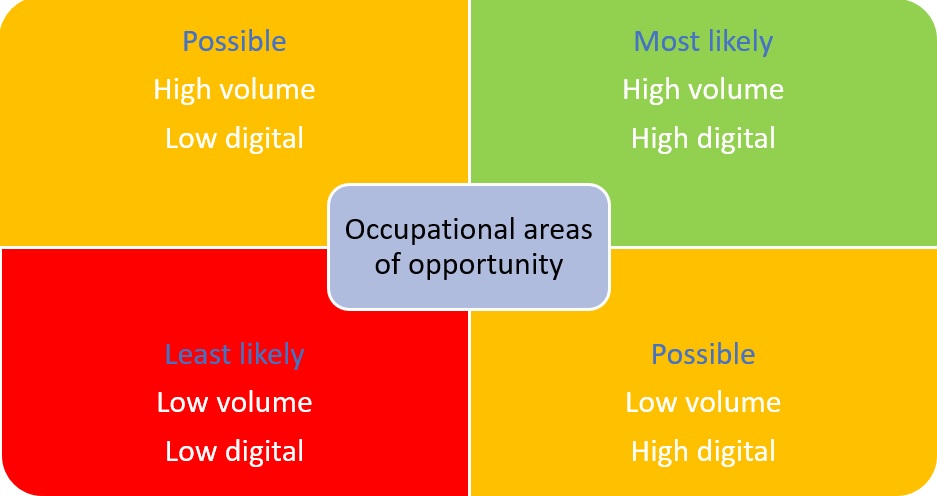E-ASSESSMENT IN TECHNICAL EDUCATION: A CALL FOR IDEAS

Last week saw the publication of my report for the Gatsby Charitable Foundation, a Review of the Potential for E-Assessment for Technical Education in England.
In my first article for FE News, E-Assessment in Technical Education Part 1: Time to Get Serious?, I summarised the content of the report and noted that as a next step I would be working for Gatsby on one of the follow up recommendations and would be seeking assistance from FE News readers.
This second article now initiates a call for ideas to identify occupational areas which are most promising for change in terms of transformational use of technology for assessment, and to look for case study material, particularly from employers.
Please read on to find out more about how you may be able to help:
The potential of technology-based approaches
In the first article, I made the case, in an increasingly digital world, for more transformative use of technology for assessing technical education. I noted that technology can be used in a wide range of ways for different assessment methods, at different stages of the assessment process and I suggested that technology-based approaches could be placed on a broad spectrum of transformative potential.
On the one hand, there are technology applications that offer practical ways to enhance existing assessment practices, but do not necessarily change the nature of the assessment process itself (suggested examples include automated multiple-choice tests and script marking, remote proctoring and invigilation, e-portfolios, work-based assessment apps, e-credentials and badging).
On the other hand, there are those that appear to have greater transformational potential to change the nature of the technical assessment itself, but may be more difficult to introduce within the current context and require more investment (suggested examples include adaptive assessment using the growing capability of AI, data capture and performance analysis technologies used in real workplace settings, simulations using VR and AR to create controlled assessment environments, games technologies blurring lines between formative and summative assessment).
It is with these that my primary interest lies. Using these technologies in combination, an alternative model for assessing technical education can be conceived, moving away from separate ‘stop and test’ assessment to a more continuous process embedded in the teaching and learning, and in the workplace itself.
Identifying areas of opportunity
My report begins to analyse where the occupational areas of greatest opportunity might be found to test out new and transformative approaches to using digital technology for assessment.
Two key considerations are likely to be the scale to justify investment and the extent to which the occupation is digitalised.
Thus, as a starting point it would seem to make sense to look at the top right-hand quadrant of the matrix below.

Secondary considerations might include:
- Specificity and uniformity of role. Technological approaches are likely to be more practical and cost effective where the skills required are relatively narrow and specific, though these may require high levels of technical expertise.
- High stakes. Where the stakes are high, whether financially or in terms of safety, there is the greatest incentive to innovate with technology to ensure assessment is valid and reliable.
- Cost differentials. Areas could be focused on where there is a significant cost differential between using real equipment and what can be achieved through digitally simulated assessment.
- Newness. It may be easier to design an assessment process from scratch where new qualifications and standards are being developed, particularly where technology is changing and creating new occupations.
- Industry impetus. Employers need to be on board, recognising where there are shortcomings in conventional assessment approaches for their industry and willing to contribute their expertise exploring technological solutions.
Scale could also be achieved by looking at the assessment of cross-cutting competences which underpin multiple occupations. Technology could be brought in from industry or gaming rather than developed from scratch. More details of this analysis can be found in the full report.
A call for ideas
By means of this article, I would like now to invite FE News readers’ ideas on what you believe are the most promising areas to introduce more transformational use of technology for assessing technical education.
I would also be particularly interested to hear about examples of where employers are already using approaches to performance monitoring and data collection in the workplace that could be adapted for assessment purposes. Your ideas and examples can be sent by email, preferably by 3 December 2021. I look forward to hearing from you.
Dr Stuart Edwards, independent consultant and adviser, former college chair, and honorary research associate at the UCL Knowledge Lab











Responses